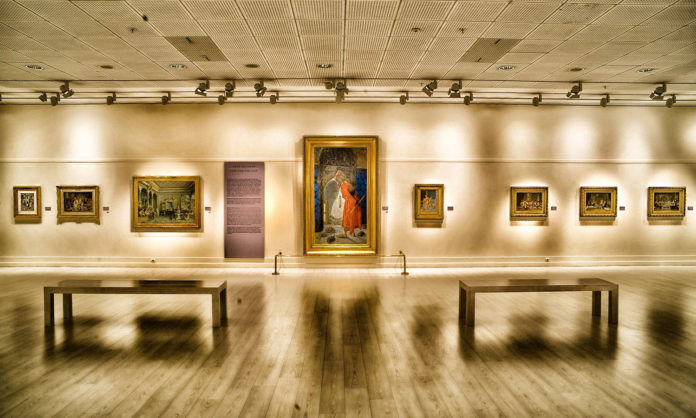
In a post on CrimeReads, Cordy Abbott says sometimes objects are so beautiful, we can’t help but steal them. “We can think of numerous crimes committed without an economic motive – from DUI to dueling, from Keeping a Disorderly House to homicide – but theft isn’t one of them,” he says. “Except, that is, for certain cases of art, antiques, and antiquities theft.”
Abbott considers art theft a crime in a category of its own, and he identifies two types of thief: “profit-motivated (which makes up the majority of art thefts, are more likely to be committed by a group and more likely to use violence) and art-motivated (works alone since there will be no payoff to share and because he wants to keep the art for himself.)”
In 1999, Etoh Mvondo stole three paintings from Paris museums because he liked the idea of owning a Renoir at the age of twenty. In 1911, Vincenzo Perugia stole the Mona Lisa without a profit motive, even though he tried to sell it later. “Was there something inherent in the painting itself that inspired the crime?” Abbott asks. “Can art be criminogenic or corruptive?” Abbott believes the answer is yes, in part because certain artworks are the subject of theft or attempted theft.
Abbott notes that the theft of art from museums is an irrational choice, often made by people with no prior criminal history, no financial motivation, and no social pressure to do so. “Their irrational choices hint at something beyond human centric models of why people commit crimes,” he says. There must be other motivations inherent in the art itself.
Abbott suggests art can motivate crime when it inspires loyalty higher than that for social norms. “Examples of the higher loyalty appealed to include saving the artwork or antique, their special appreciation of the object’s beauty, or for their own cultural edification,” he explains. “These lawbreakers valorize their criminal activity.” In other words, stealing the art was not wrong, but a calling to a higher duty. Thieves also may believe that the law is wrong or minimize the legitimacy of the system of laws, and therefore there is social benefit to their crime.
Abbott also suggests that simply possessing the item gives the thief a thrill, since they will never be able to display it openly. “It might be as simple as the thrill of the chase,” he says. Or the very exclusivity of the object may make it attractive as a way to wield power over others, limiting their ability to even view the art. In a way, the criminal act can be viewed as rebellion against the restrictions of the art world.
“Dealers act as gatekeepers – some brag about only selling art to certain people,” Abbott writes. “Museum curators and collectors act as taste setters. Antique stores display goods so peculiar that only the oldest of old money can understand and appreciate it. The nature of the art market – the secrecy and the opacity – make it practically impenetrable. It’s easy to see how an outsider would feel powerless and frustrated enough to literally take matter into his own hands.”
Finally, Abbott says the simple element of supply and demand is a factor in art theft. “The law affirms the values that make the object desirable, supporting and enhancing the objects’ power,” he writes. This power is exerted over both the thief – who only steals items of value – and society, which creates law only to protect valuable things.











